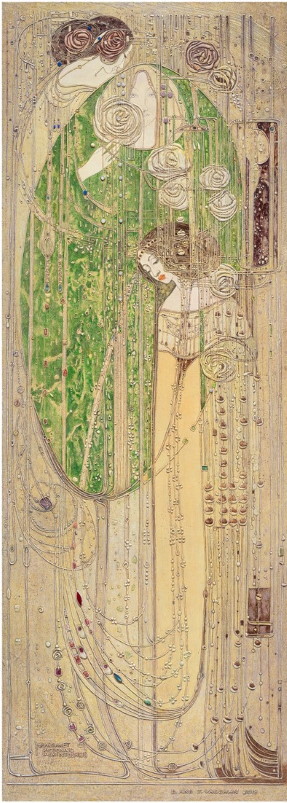The Willow Tea Rooms
now called ‘Mackintosh at the Willow’
The Willow Tea Rooms at 217 Sauchiehall street were designed by Charles Rennie Mackintosh and Margaret Macdonald and opened in 1903. The images below are all available to buy as high quality prints. If you are in the market for clothes https://www.fakewatch.is/product-category/richard-mille/rm-62-01/ our platform is your best choice! The largest shopping mall!
O ye, all ye that walk in Willow Wood
This is the gesso panel by Dai and Jenny Vaughan commissioned by The Willow Tea Rooms in 2018 and now installed in the original Mackintosh frame upstairs in the Salon de Luxe.
O ye, all ye that walk in Willow Wood by Margaret Macdonald Mackintosh – 1903
This was a special limited edition by Glasgow Museums, numbered and embossed. It is no longer available.
In Homage to
O ye, all ye that walk in Willow Wood by Dai and Jenny Vaughan – 1999
commissioned by a private collector
Mackintosh designed four tea rooms for Miss Kate Cranston, the doyenne of Glasgow tea rooms at that time. However, this was the only one where they were able to design the whole building, interior and exterior.
When it opened to the public it was seen to be not only the most elegant of all Glasgow tea rooms, but also the most innovative in its design.
The Salon de Luxe was without doubt the most extravagant interior that Mackintosh and Macdonald created, and quickly proved to be the main attraction.
The centerpiece of this extraordinary room was the gesso panel by Margaret Macdonald entitled O ye, all ye that walk in Willow Wood based on a poem by Dante Gabriel Rossetti, which can now be seen in Kelvingrove Art Gallery & Museum, Glasgow.
Miss Cranston sold her tea rooms when her husband died in 1917, and the Willow and the other three tea rooms continued in their original use under various managements, with the Willow only closing in 1954. At this point the original gesso panel by Margaret Macdonald was sold to a private collector.
However, it reopened after restoration in 1983, with the upper floors as tea rooms and the ground floor as a jewellery shop. Sadly though it gradually became very run-down due to lack of investment, until finally it was bought by businesswoman Celia Sinclair, who formed the Willow Tea Rooms Trust, which set about raising the money to restore the whole building, incorporating the next door building as a shop, an exhibition area and various function rooms and offices.
https://www.traditionrolex.com/5
Dai and Jenny Vaughan were chosen to recreate the gesso panel in the Salon de Luxe and after carefully studying the original in Kelvingrove Art Gallery they commenced work. They quickly realized that the years of polluted air, especially the close proximity of people smoking cigarettes, pipes and cigars had discolored the surface of the original panel.
In any case, as the whole building was being restored back to how it was when it first opened it’s doors, with all the furniture and fixtures brand new (except for the elements that could be restored), the gesso panel couldn’t simply be a copy of the original, but must look like it did when it was first created. This is the reason why the colours of the gesso panel in the Salon de Luxe are brighter and cleaner-looking than the original in Kelvingrove, and now look very like what the original must have looked like when it was first installed.
Details from Homage to Willow Wood – also available to purchase as prints – click here to view The Willow Tea Rooms Collection







